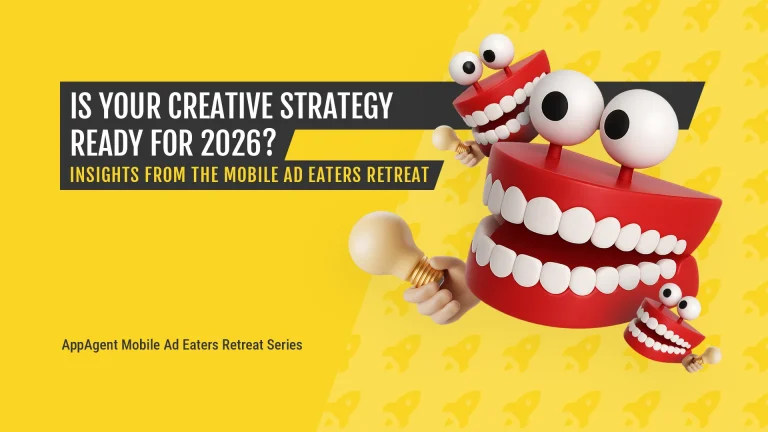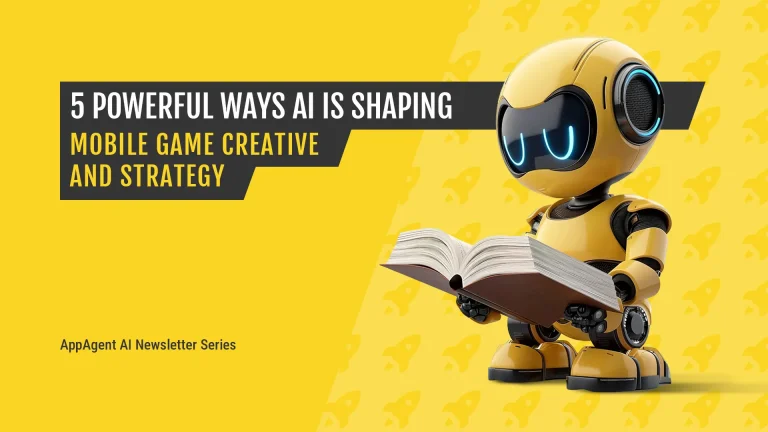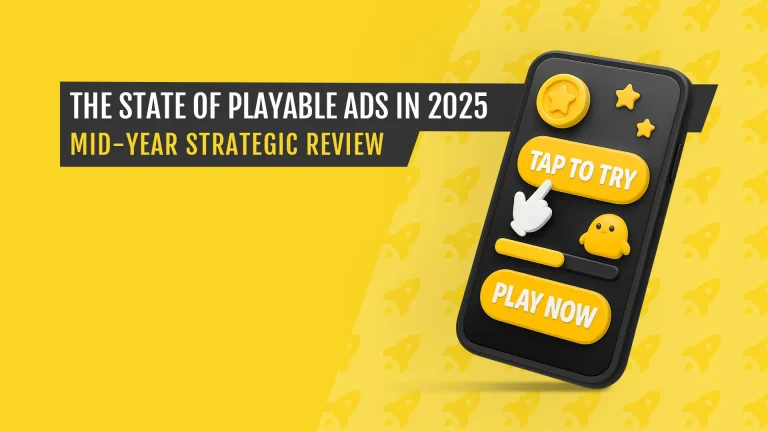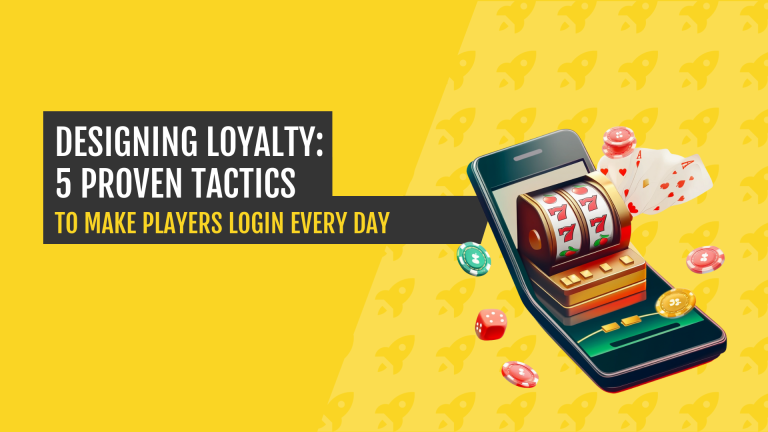Your game competes for attention every day with the 977 online ads that an average US user sees, according to Eskimi. And that number keeps growing fueled by AI and faster production speeds. Within this environment, AI in mobile game ads isn’t just a nice-to-have anymore, but a practical advantage.
Ad networks like TikTok decide which ad wins this battle within the first few seconds of engagement. TikTok’s own creative best-practice hub highlights how crucial the first few seconds are for ad performance. If people stop scrolling to watch, the platform rewards the ad with greater exposure.
Capturing attention quickly is everything, but the challenge doesn’t end there. The view rate is another crucial signal for ad network optimization, and understanding how to read mobile ad creative performance data is becoming essential. With hundreds of competitors producing content at AI speed, keeping that edge through manual effort is no longer feasible.
At AppAgent, we heavily experiment with AI-driven creative workflows and have found that AI in mobile game ads typically falls into three buckets:
- AI hooks
- AI cutscenes
- Full AI ads
Each comes with its own strengths and limitations.
1. AI Hooks: Fast Attention for Mobile Game Ads
AI’s biggest strength today lies in creating hooks – sometimes even fully replacing costly 3D production by generating new models and scenes in minutes. This mirrors what we described in our framework on captivating mobile video ads in the first four seconds.
These AI hooks often outperform traditional gameplay openings simply because they break visual patterns users expect. This gives creative strategists a way to move far beyond the limits of an existing asset library and think more deeply about the emotion or the mood a hook should evoke.
For inspiration, you can borrow from trending visual formats – like “glass fruit cutting” videos or “Which bed would you sleep in for $1M?” posts – and reinterpret them for your audience. Viewers are especially drawn to AI when it creates surreal, impossible scenarios that feel irresistibly curious.
Another effective direction is using cinematic AI-generated intro scenes that seamlessly transition into gameplay. We explored this in an internal concept test.
Bringing characters to life in humorous sketches also performs well. Our experiment featuring Caesar and Cleopatra is a good example. However, writing such scenes demands strong storytelling skills – closer to TV commercials or sitcom scripting.
So expect your existing team to struggle at first, as this type of writing hasn’t been part of their usual workflow. But who knows, maybe it’s exactly what they’ve been dreaming to do, and this creative variety will make them genuinely excited (it certainly did for our team!). It also opens new room for shaping a broader AI creative strategy that supports long-term testing.
2. AI Cutscenes: Sustaining Engagement Beyond the Hook
AI cutscenes can lift a creative far beyond its opening and help maintain engagement – an essential signal for ad networks that track view rate to decide whether to boost an ad further.
Combining cinematic moments with gameplay footage not only keeps viewers watching but also creates modular ad systems where you can apply cutscenes to previous winners and extend their lifetime. We’ve used this approach for years with titles like Clash of Clans, mixing Supercell’s cinematic clips with gameplay.
Now, AI removes the limits of existing footage the studio expensively created with in-house or external 3D productions. You can generate exactly what fits your concept instead of building the concept around what’s available. For many teams, this flexibility transforms the entire AI production workflow.
A great case is the Kards ad we produced for our long-term partner 1939 Games. Among the many mobile game ad examples we’ve worked on, we consider this one a particularly strong example.
Another interesting use case is using AI-generated cutscenes for marketability tests, which often suffer from time pressure and no available assets. This is also where AI-generated mobile game ads can speed up validation without sacrificing visual quality.
At the same time, the ad quality needs to match that of established games to get valid results. Our recent collaboration with Pixel Federation on the Puzzle Adventure rebranding test was exactly that. Thanks to AI, we produced everything – from initial concept to the final, resized video ready to run – in just ten days.
One important takeaway: high-quality cutscenes demand motion designers with cinematic and film-editing experience. Framing, lighting, set design, and pacing differ greatly from assembling gameplay montages. Keep this in mind when hiring the next talent or creative partner.
3. Full AI Ads: Potential, Pitfalls, and Surreal Creativity
Full AI-generated ads are already possible, and they represent the most extreme form of AI in mobile game ads – just not quite convincing enough yet to pass as fully human-made. And even when they do, audiences often feel uneasy when they can’t tell what’s real. This effect is closely related to the well-documented “uncanny valley” phenomenon in human perception, similar to how disturbing mobile ads make you feel. Remember the bunnies on the trampoline that caused a small breakdown on TikTok?
The main issue lies in stylistic inconsistency and visual imperfections that break immersion – something most studios, especially those with strong brand worlds, simply can’t accept. These ads also tend to attract the wrong audience, as the lack of authentic game connection leads to weaker retention and monetization.
The smarter approach may be to lean into surrealism instead. People know perfectly well there’s no cinematic adaptation of Kim Possible or Family Guy, yet they’re dying to see what one might look like, and that’s where AI truly shines.
Still, the progress is remarkable. AI-driven storytelling improves month by month; we recently explored a full AI cinematic inspired by Tim Burton’s Wednesday. It’s not flawless, but it shows how close we’re getting. And next time, we might just make it even stranger to fully embrace what AI does best right now.
The creative team at AppAgent even remade a live-action UGC-style ad we shot in Mallorca in 2024. The AI version took a fraction of the time and cost, yet came surprisingly close to the original as you can see on a side-by-side comparison. One thing’s certain: we won’t be going back to the Balearic Islands for work again, though it never gets old for cycling.
This space might soon attract film and TV professionals who see a new playground for storytelling. The goal should be to create visually stunning, emotionally engaging stories that stop people mid-scroll.
The Road Ahead for AI in Mobile Game Ads
The market is already flooded with AI ads, which leads people to quickly train their own “AI filters” to block out the superficial shine of AI imagery. As AI in mobile game ads becomes more widespread, players get even better at spotting anything that feels synthetic or repetitive. What will remain is what feels natural to humans:
- Emotions – ads that make people feel something
- Uniqueness – visuals and ideas no template can replicate
- Relevance – a deep understanding of audience and context
For the next few years, the best human creatives using AI as a tool (not a one-prompt-shortcut) will outperform automated systems. The gap between high-production ads and performance creatives is closing fast. For marketers under pressure to deliver more with less, this is the moment to learn new skills, blend cinematic storytelling with data-driven design, and maybe even invite fresh film talent to the team. This shift will also accelerate AI creative testing across formats and genres.
This field is changing by the week. If you see it differently or have your own learnings, I’d love to hear from you, so drop me a message via LinkedIn.























